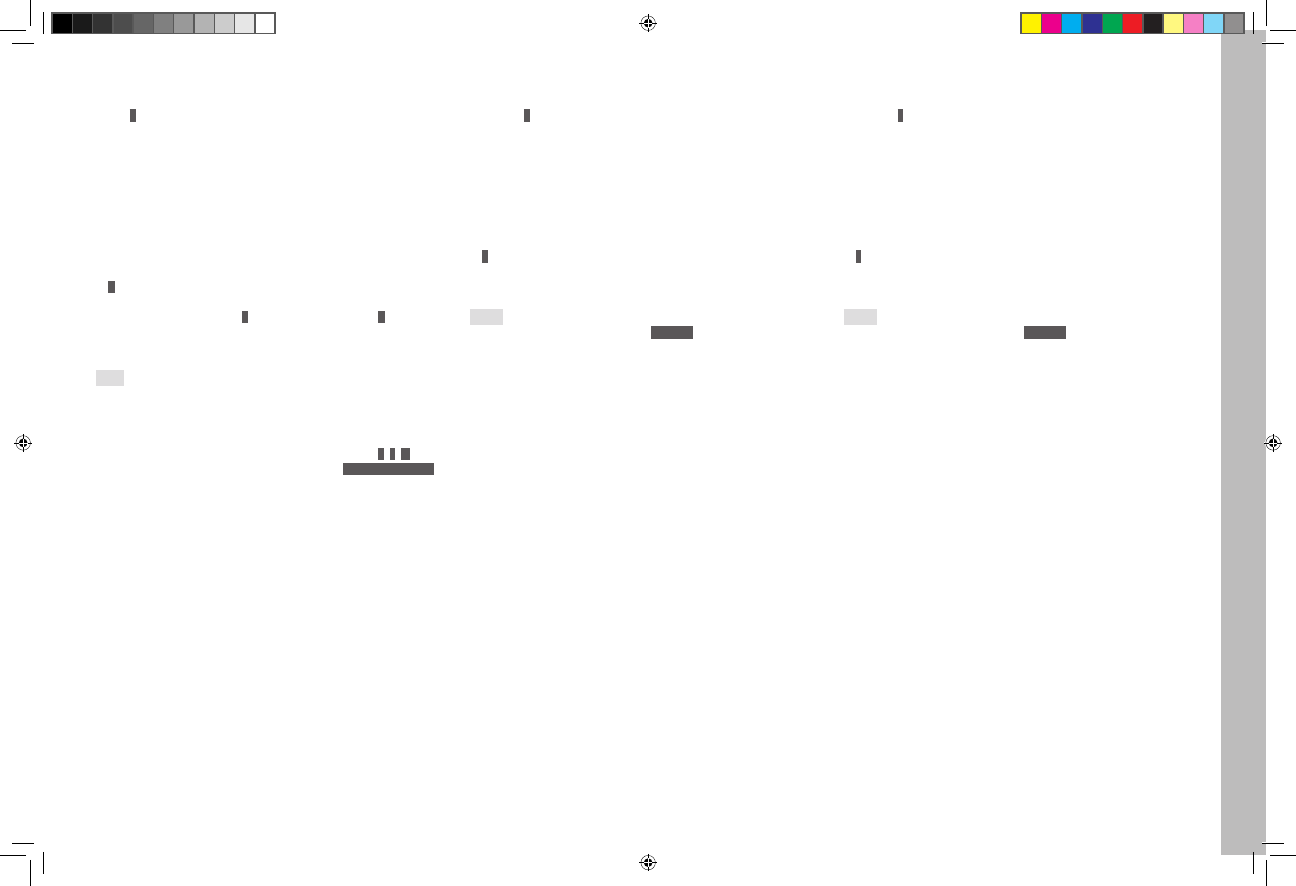LEICA SBP PRO 1 Lithium-Ion Battery for S Typ 007 (7.3V, 2300mAh) User Manual
Page 35

EN
31
Recor
ding mode
PROGRAM SHIFT
Setting the operating mode
Select
P
with the rear thumbwheel
The program shift function allows the speed/aperture combinations
determined in automatic program mode to be changed, while the overall
exposure, i.e. the brightness of the image, remains unchanged.
The shift is performed with the shutter speed setting dial. Turn
– to the right for larger apertures (smaller values) or faster shutter speed
– to the left for smaller apertures (larger values) or slower shutter speed.
Displays in viewfinder and top panel display, and in Live View
mode also in the monitor
–
S
in the top panel display as an indication of the use of the Shift func-
tion, and
– the operating mode display
P
in the monitor changes to
S
,
– the automatically controlled aperture and speed values change in
opposite directions.
Note:
Shift settings are retained
– after a photo is taken,
– beyond the 12 s holding time of the exposure metering system,
but not
– when changing to a different exposure operating mode (
A
,
T
,
M
)
– when the camera is switched off and on (also by
Auto Power Saving
).
In these cases the camera always returns initially to the standard setting
of shutter speed and aperture when automatic program mode is used
again.
APERTURE PRIORITY - A
Setting the operating mode
1. Select
A
with the rear thumbwheel (see also p. 30, "Exposure con-
trol")
2. Set the desired aperture by turning the rear thumbwheel.
The exposure time is then automatically set according to the prevail-
ing light and steplessly between 60s and
1
⁄
4000
s, or
1
⁄
1000
s when using
the central shutter on some Leica S lenses.
Displays in viewfinder and top panel display, and in Live View
mode also in the monitor
–
A
(Aperture priority) for the selected exposure mode,
– the manually set aperture value, and
– the automatically controlled time value.
Notes:
• If the automatic sensitivity setting (
ISO Auto
) is activated at the same
time, the control range of aperture priority is extended. However, the
shutter speed is only extended beyond the value dictated by the
1
⁄
f
1
setting selected in the menu when the highest set sensitivity is
reached.
• With very little light or extreme brightness it is possible that the avail-
able shutter speed range is no longer sufficient for the preselected
aperture value. In such extremely rare cases a warning symbol for
underexposure appears in the viewfinder (and possibly also a warning
of values below the metering range, see also "Values below the meter-
ing range"), or a warning symbol for overexposure. Correct exposure
metering is then no longer possible.
• In video mode the slowest shutter speeds are dependent on the set
frame rate.
SHUTTER SPEED PRIORITY - T
Setting the operating mode
1. Select
T
with the rear thumbwheel (see also p. 30, "Exposure con-
trol")
2. Set the desired exposure time with the shutter speed setting dial.
The lens aperture is then automatically controlled according to the
prevailing light and steplessly between open and smallest aperture of
the respective lens.
Displays in viewfinder and top panel display, and in Live View
mode also in the monitor
–
T
(Time priority) for the selected exposure mode
– the automatically controlled aperture value
– the manually set time value
Notes:
• If the automatic sensitivity setting (
ISO Auto
) is activated at the same
time, the control range of shutter speed priority is extended. A mini-
mum shutter speed that may have been set there, however, is no longer
active.
• With very little light or extreme brightness it is possible that the avail-
able aperture range of the lens used is no longer sufficient for the
preselected shutter speed. If possible, select a different shutter speed.
• As a rule, however, correct exposure can be achieved with an auto-
matic setting of the appropriate shutter speed even in such cases, by
"overriding" your manual preselection. A warning symbol appears,
possibly also as a warning of values below the metering range, see also
"Values below the metering range". Correct exposure metering is then
no longer possible.
Inhalt_EN.indd 31
12.10.2015 09:34:16
